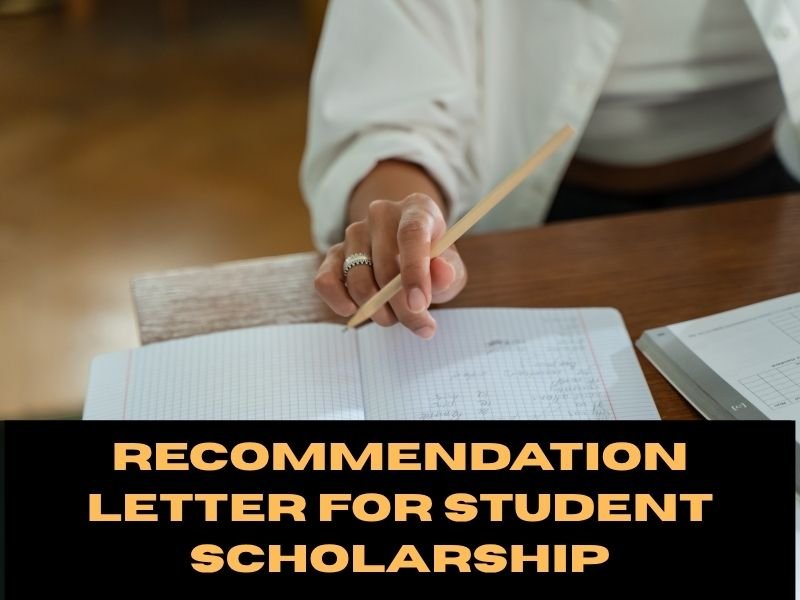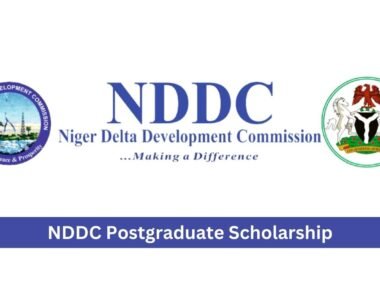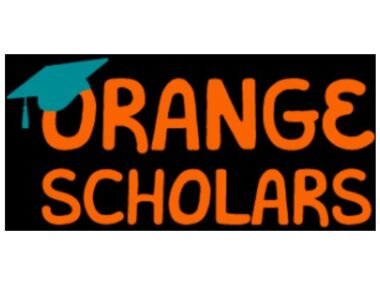A recommendation letter For Student Scholarship is an effective tool that can enhance a student’s application by highlighting to a scholarship committee their strengths, character, and potential. Regardless of your role, teacher, professor, counselor, coach, or employer, writing an effective letter involves thorough preparation, individualization, and alignment with the objectives of the scholarship.
This thorough guide offers downloadable templates, sample letters, a step-by-step procedure, and professional advice to help you create a letter that will stand out and assist a worthy student in getting financing. This tutorial is your go-to tool for writing persuasive scholarship recommendation letters, with over 1,000 words of practical advice.
The Significance of a Scholarship Recommendation Letter
A recommendation letter for a scholarship provides an outside viewpoint on a student’s credentials, accomplishments, and suitability for a particular award. Scholarship experts claim that a strong cover letter can set a candidate apart in a crowded application pool by emphasizing traits like passion, leadership, and perseverance that resumes and transcripts are unable to adequately capture. Your position as a recommender is crucial since committees use these letters to evaluate a student’s character and potential.
This manual addresses:
- A thorough, step-by-step guide on preparing a recommendation letter for a scholarship
- modifying plans for different kinds of scholarships (athletic, STEM, arts, need-based, merit-based, etc.)
- Typical mistakes to avoid while writing a formal, businesslike letter
- Two letters with thorough comments as examples
- A checklist and template that may be downloaded for convenient use
- Responses to often asked questions that address common issues
A Complete Guide to Writing a Scholarship Recommendation Letter
Use these tips to draft a well-written, compelling letter that scholarship committees will find appealing.
1. Review the scholarship requirements.
Knowing the objectives and prerequisites of the scholarship is the foundation of a strong letter. Scholarships vary widely; some prioritize academic success more than others, while others focus on leadership, financial need, or specialized abilities like athletics or the arts. The student’s request:
- The scholarship’s name, objectives, and eligibility requirements
- Their resume, transcript, personal statement, or application essay
- Specific achievements or qualities they would like to emphasize
- Any requirements for submissions (such as word count, format, and deadline)
Why It Is Important: The student’s case is strengthened and attention to detail is shown when your letter is in line with the scholarship’s objectives. Merit-based scholarships, for instance, can place more importance on academic achievements, whereas need-based scholarships might place more emphasis on resiliency in the face of adversity.
Pro Tip: For clarification, get in touch with the scholarship organization or visit their website. This guarantees that the priorities of the committee are covered in your letter.
2. Adopt a Formal Approach
A letter with a clear format is easier to read and more professional. Adhere to this format:
Header: Provide your name, title, address, institution or organization, and phone number or email address.
- Date: Use today’s date, such as July 16, 2025.
The letter should be sent to the scholarship committee or a designated contact, such as “Dear XYZ Scholarship Committee.” “To Whom It May Concern” is appropriate but less desirable if it is unknown. - Length: Unless the scholarship indicates otherwise, aim for 300–500 words (one page).
- Closing: End with “Sincerely” or “Best Regards,” then type your name and sign your name (if you are sending a paper copy).
- Your letter must have a greater impact if it is formatted professionally, which conveys integrity and consideration for the committee’s time.
3. Write an Engaging Preface
- The tone is established, and your authority as a recommender is established in the introduction. Incorporate:
- Your name, position, and connection to the pupil
- For what length of time and in what role (teacher, mentor, supervisor, etc.) have you known the student?
- The name of the scholarship and a concise recommendation
For instance:
For the past three years, I have had the honor of teaching and mentoring Maria Gonzalez as a biology professor at Springfield University. It gives me great pleasure to suggest Maria for the National STEM Scholars Award because of her outstanding academic record and enthusiasm for scientific research.
Why It Is Important: A compelling letter starts with a powerful beginning that captures the committee’s interest and establishes your authority.
4. Emphasize the student’s credentials
The student’s strengths should be highlighted in the letter’s body (two to three paragraphs), which should also provide concrete instances of how the student is qualified for the scholarship. Discuss two or three essential attributes that meet the requirements of the scholarship, such as:
- Academic accomplishments include a high GPA, accolades, awards, or exceptional coursework.
- Character and Leadership: Volunteering, extracurricular activities, or personal traits like empathy or resiliency.
- Relevance to the Scholarship: How the objectives or experience of the student fit with the purpose of the scholarship.
For instance:
Maria received the Outstanding Researcher Award for her study on renewable energy solutions and a 4.0 GPA in my Advanced Physics course. Outside of the classroom, she supervised a campus sustainability project that used student-driven recycling programs to cut waste by 20%. Her capacity to blend societal impact with academic rigor exemplifies the principles of the National STEM Scholars Award.
Why It Matters: The student’s qualifications are demonstrated in detail by specific instances and measurable accomplishments, which strengthens the case for your recommendation.
5. Adjust the Letter to the Type of Scholarship
- Different scholarships place varying values on these attributes. Make your letter unique by emphasizing pertinent qualities:
- Merit-based scholarships place a strong emphasis on scholarly accomplishments, intellectual curiosity, or academic excellence (e.g., research, publications).
- Need-Based Scholarships: Emphasize the student’s tenacity or resourcefulness in addition to their financial difficulties.
- Scholarships for athletes that emphasize leadership, discipline, teamwork, or athletic achievement both on and off the field.
- STEM Scholarships: Highlight your technical proficiency, research background, or inventiveness (e.g., lab work, coding projects).
- Scholarships for the arts: Emphasize artistic abilities, shows, exhibits, or portfolios.
- Scholarships for community service: Place an emphasis on civic involvement, volunteerism, or social impact.
An Illustration of a Need-Based Scholarship
James Lee volunteered 100 hours at a local food bank and kept a 3.9 GPA while working two part-time jobs to support his family. He is a perfect candidate for the Hope for Tomorrow Scholarship because of his unwavering commitment to achieving academic success while giving back to his community.
Why It Is Important: Customizing the letter increases the student’s chances of success by demonstrating that you have done your research and confirming that their qualifications match the scholarship’s goals.
6. End with a Powerful Recommendation
Your advice should be reaffirmed in the conclusion, along with your optimism about the student’s future achievement. If further information is required, offer to supply it along with your contact information.
For instance:
Maria is someone I strongly suggest for the National STEM Scholars Award. She is a worthy candidate who will succeed in her future undertakings because of her leadership, dedication to sustainability, and intellectual curiosity. For additional conversation, please reach me at maria.recommender@university.edu or (123) 456-7890.
Why It Matters: By demonstrating your sincere support for the learner, a strong ending makes an impact that lasts and encourages more interaction.
7. Edit and Send
Examine the letter before sending it for:
- Mistakes in grammar, spelling, and punctuation
- Conciseness and clarity
- Respect for the scholarship’s requirements (such as format and submission method). Send in using the designated manner (e.g., mailed hard copy, online portal, or email).
- Why It Matters: A well-written letter guarantees that the committee concentrates on the student’s strengths rather than flaws and conveys professionalism.
Examples of Letters of Recommendation for Scholarships
Two annotated sample letters for various scholarship types are provided below. These samples show you how to properly format and personalize your letter.
Example 1: Scholarships Based on Merit
[Your Name] 123 College Ave, Springfield, IL 62701 Professor of English, Springfield University | professor@university.edu | (123) 456-7890 July 16, 2025Dear Committee for the Springfield Merit Scholarship,
Emily Chen has my heartfelt recommendation for the Springfield Merit Scholarship. During my two years as Emily’s English professor, I have seen firsthand her outstanding academic achievement and commitment to literary studies.
Emily has a 4.0 GPA and was recognized with the Dean’s Award for her innovative postcolonial literature thesis that was accepted for publication in a peer-reviewed magazine. In addition to her academic pursuits, she established the university’s Creative Writing Club, which now has over 100 members and hosts monthly workshops. Her capacity to strike a balance between leadership and demanding coursework is a testament to her dedication to her peers and intellectual curiosity.
Emily is a perfect fit for this scholarship because of her love of books and her aptitude for analysis. I do not doubt that she will keep doing well and making a significant contribution to the literary community. For more information, please email me at professor@university.edu.
Regards, [Your Name]
Notes: Introduction: Describes the recommender’s qualifications and connection to the student.
Body: Provides concrete instances of leadership (Creative Writing Club) and academic accomplishments (GPA, thesis).
Conclusion: Offers contact information and restates the advice.
Example 2: Scholarship Based on Need
[Your Name] (987) 654-3210 July 16, 2025 High School Counselor, Lincoln High School 456 School St, Lincoln, CA 95648 counselor@school.orgTo the Scholarship Committee for Hope for Tomorrow,
Michael Rodriguez has my heartfelt recommendation for the Hope for Tomorrow Scholarship. As Michael’s three-year counselor, I have witnessed his tenacity and will to overcome major financial obstacles to continue his studies.
Michael maintains a 3.8 GPA and places in the top 10% of his class despite working 20 hours a week to provide for his family. In addition, he has volunteered more than 150 hours to a local STEM program as a tutor for disadvantaged youngsters. He demonstrated his engineering potential by leading the school’s Robotics Club to a regional championship victory. Michael’s ability to manage his career, education, and volunteer activity is incredibly motivating.
Michael is a worthy recipient of this award because of his tenacity and academic potential. I do not doubt that it will help him fulfill his ambition of becoming a mechanical engineer. For further information, please contact counselor@school.org.
Regards, [Your Name]
Notes: The scholarship and the recommender’s relationship with the student are stated clearly in the introduction.
Body: Uses measurable criteria to highlight community involvement, academic achievement, and financial hardship.
In conclusion, it strengthens the student’s fit and encourages further interaction.
Common Errors to Steer Clear of
Avoid these typical traps to make sure your letter is effective:
Being Overly General: Steer clear of generalizations like “They’re a great student.” Use concrete examples instead, such as “Jane led a team to win a national debate competition.”
Ignoring Scholarship Criteria: The impact of the letter is diminished if it is not in line with the objectives of the scholarship. Examine the scholarship’s requirements at all times.
Writing Too Much or Too Little: A letter that is too long could bore the reader, and one that is too short could come across as fake.
Including Errors: Formatting or grammar errors damage your trustworthiness. Make sure to proofread everything.
Overuse of Clichés: Without supporting data, terms like “hardworking” or “dedicated” have little meaning. Provide examples to support your claims.
Why It Matters: By avoiding these errors, you can make sure that your letter is compelling, professional, and meets the requirements of the scholarship.
How to Stand Out in Your Letter
Take into account these tactics to make your letter stand out from the others:
Employ Storytelling: Give a succinct example of a student’s influence, such as a project they oversaw or a difficulty they conquered.
Quantify Your Accomplishments: To lend credibility, include metrics such as your GPA, volunteer hours, or accolades you’ve received.
Exhibit Enthusiasm: Express sincere enthusiasm for the student’s capacity to make an impact.
Align with Scholarship Values: To demonstrate alignment, use words from the scholarship’s mission statement.
Add a Call-to-Action to reaffirm your commitment and ask the committee to get in touch with you for additional discussion.
Anecdote Example:
Sarah planned a charity concert as part of a school fundraiser, raising $5,000 for underprivileged local families. She showed leadership and compassion by organizing her peers and handling logistics.
Why It Matters: By using these strategies, your letter will be more memorable and convincing to the committee.
Downloadable Materials
- We have developed free resources to make the process easier:
- Template for a Scholarship Recommendation Letter (PDF)
- Writing a Scholarship Recommendation Letter Checklist
- Infographic: Essential Elements of a Successful Letter
- Why It Matters: Offering resources that may be downloaded improves user experience, promotes interaction, and raises the possibility of backlinks from educational websites.
Questions and Answers (FAQs)
1. How long should a letter of recommendation for a scholarship be?
Unless the scholarship stipulates a different length, a recommendation letter for a scholarship should normally be between 300 and 500 words (one page). This guarantees succinctness while providing ample room to emphasize the student’s credentials.
2. Who is qualified to provide a letter of recommendation for a scholarship?
Teachers, professors, counselors, coaches, employers, or mentors who know the student well and can give concrete instances of their accomplishments and character are the best recommenders.
3. How can I modify a letter to apply for a particular scholarship?
Examine the requirements of the scholarship, request pertinent information from the student (such as a résumé or personal statement), and highlight attributes that support the objectives of the grant, such as financial need for need-based awards or academic brilliance for merit scholarships.
4. Can I apply for more than one scholarship with the same letter?
Although the main points can be repeated, each letter should be tailored to the needs, goals, and target audience of the particular scholarship to be as effective as possible.
5. What if the student is someone I don’t know well?
To get particular information about the student’s accomplishments, objectives, and background, politely decline the request or request a CV, personal statement, or meeting.
To sum up
One effective strategy to support a worthy student and assist them in obtaining financial aid for their study is to write a recommendation letter for a scholarship. You may write an engaging letter that makes an impression on scholarship committees by using this step-by-step strategy, customizing your letter to the scholarship’s requirements, avoiding typical errors, and including concrete examples. To make the process easier, download our free template and checklist. For additional advice, see our linked posts on how to write a scholarship essay and how to prepare a scholarship application.







